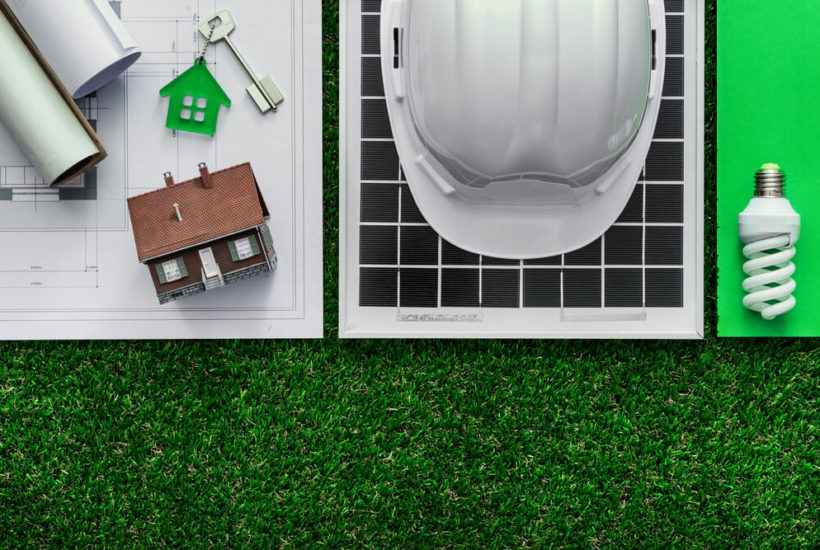Sponsored
Is green construction the answer to sustainable houses?
Sustainability is more than just a trend. It is now a necessity due to the issue of climate change. Here’s what you need to know about green construction.

Sustainability is the buzzword in today’s world. In fact, everywhere you look, there are many calls for sustainability from using metal straws down to using avocado seeds as a biodegradable replacement for plastic in single-use cutlery.
But sustainability is more than just a trend; it’s a necessity because of the ever-looming issue of climate change that’s plaguing the world we live in today.
Climate change, very simply put, is a collective term used to describe the shift in worldwide weather occurrences because of an increase in the average global temperature. This phenomenon brings about severe droughts, devastating floods, and the warming of the oceans which can cause coral bleaching that, in turn, affects marine wildlife.
One of climate change’s aspects is global warming, caused by the emission and accumulation of greenhouse gases in the atmosphere. Carbon dioxide ( CO2) ranks first as the most common greenhouse gas caused by human activities. This gas already passed 400ppm, the highest it has ever been since the Industrial Revolution.
The construction industry also responded to calls for sustainability because some of the processes as well as the materials used to build today’s structures are some of the main contributors to the increasing global levels of carbon dioxide. To offset the environmental effects, the industry has been advocating green construction in addition to using technology such as construction project management software, RFI tool, and scheduling software to streamline their processes.
What is green construction?
Green construction is another term for sustainable construction. Sustainable construction ensures that the materials and processes used in a building are environmentally friendly and will stay so all throughout a structure’s lifecycle – from the planning cycle, the actual construction, maintenance, renovation down to demolition.
Building sustainable houses
There are many ways you can build or renovate your existing residential dwelling so that it becomes more sustainable.
Good insulation
Insulation is one of the more straightforward parts of any sustainable home. A well-insulated house can cut energy bills spent on heating and air-conditioning by keeping the home warm in the winter and cool in the summer. In addition to lowering your heating and cooling bills, carbon emissions from these devices can be cut down.
Insulation materials, which are installed in the roofs, floors, and walls, work by repelling heat flow. Insulation materials are measured by what they call R-value; the higher the R-value, the greater the insulation. This R-value greatly varies according to the type of material, thickness and can be affected by thermal bridging, as well as heat coming off the house beams.
When you are insulating a new build, it may be an option for you to choose natural insulation over man-made ones. The former choice has low embodiment energy, made from renewable and organic materials, and can be reused and recycled. In addition to these, they are not toxic, hypoallergenic, and allows the house to breathe by regulating humidity through their absorbent properties. Some of the more popular choices for natural insulation already in the market today are:
- Sheep’s wool
- Flax and hemp
- Cellulose
- Wood fiber

The only downside to using these materials is that they are more expensive than the traditional man-made ones.
Choose to power your home by using renewable sources
Choosing how to power your home is also part of building a more sustainable house. If you are doing a new build, you might want to integrate alternative sources of energy into the house design so that you can cut back electricity usage from the grid. This can be helpful to the environment especially if the power plant in your area runs on fossil fuels, a non-renewable resource that produces greenhouse gases.
Should you choose to go the route of installing an alternative and renewable source of power into the design of your new house, many choices are now available thanks to technology. Today’s power sources can be much smaller and more aesthetically pleasing than their predecessors.
One of the things that you can look into is the Solar Tiles from Tesla. These are basically solar panels that are shaped and looks like regular roof tiles. They are discreet, looks better than regular roof tiles, and in addition to protecting your house from the elements, they also generate electricity for you to use.
If solar power is not your
Buy energy efficient appliances
If retrofitting your house with a solar roof or installing a wind turbine is a big step for you, then you can start to make the house that you live in more sustainable by buying energy-efficient appliances.
Appliances that are energy efficient are made to run on minimum amounts of energy. When you buy an appliance, there is usually a sticker with letters from A to D that indicates what level of energy efficiency the machine runs on. Choose an appliance with a rating of A or higher.
While you don’t have to replace all of the appliances that you have, try to make sure that the most utilized appliances like the fridge, washing machine, dryer, and the dishwasher are energy efficient.
Choose concrete alternative materials
Today, one of the biggest contributors to the rising carbon dioxide level on our planet is cement. It is the main material that is used to build our houses and buildings. Unsurprisingly, it also contributes to approximately 55 of the total carbon dioxide emission.
If you are wondering how a seemingly harmless construction material like cement can contribute so much to global warming, the answer lies in how cement is made. The ratio of carbon dioxide emitted to make cement is almost a 1:1 ratio. This means that for every 1000kg of cement made, 1000 kg of CO2 gas is released.
Sustainability is not the “in” thing to do today; it is the right thing to do and is a moral responsibility for all of us who live on this Earth. And there is no better place to start the embracing and practicing sustainability than in our own house.
(Featured image by Stock-Asso via Shutterstock)

-

 Biotech4 days ago
Biotech4 days agoAdvancing Sarcoma Treatment: CAR-T Cell Therapy Offers Hope for Rare Tumors
-

 Impact Investing2 weeks ago
Impact Investing2 weeks agoShein Fined €40 Million in France for Misleading Discounts and False Environmental Claims
-

 Impact Investing1 day ago
Impact Investing1 day agoNidec Conversion Unveils 2025–2028 ESG Plan to Drive Sustainable Transformation
-

 Impact Investing1 week ago
Impact Investing1 week agoVernazza Autogru Secures €5M Green Loan to Drive Sustainable Innovation in Heavy Transport
























